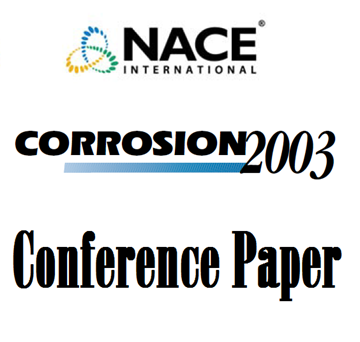Search
11160 Effect of Selective Dissolution on Stress Corrosion Cracking Susceptibility of Austenitic and Duplex Stainless Steels in Alkaline Solutions
Also Purchased
51312-01202-Selective Dissolution and Stress Corrosion Cracking Susceptibility of Austenitic and Duplex Stainles
Product Number:
51312-01202-SG
ISBN:
01202 2012 CP
Publication Date:
2012
$20.00
00596 STRESS CORROSION CRACKING OF STAINLESS ALLOYS IN OXYGENATED CAUSTIC ENVIRONMENTS
Product Number:
51300-00596-SG
ISBN:
00596 2000 CP
$20.00
03518 STRESS CORROSION CRACKING OF 304L STAINLESS STEEL IN SODIUM SULFIDE-CONTAINING CAUSTIC SOLUTIONS
Product Number:
51300-03518-SG
ISBN:
03518 2003 CP
Publication Date:
2003
$20.00




